This month, MAG marks 30 years of operations in Laos, clearing unexploded bombs left over from a war that ended over 50 years ago.
During the conflict, more than two million tons of cluster bombs were dropped on Laos – that’s equal to a planeload of bombs every eight minutes, 24 hours a day, for nine years – making Laos the most heavily bombed country in history per capita.
Since 1994, MAG has been dedicated to fostering sustainable peace and supporting recovery in Laos.
Over the last three decades, more than 340,000 bombs have been cleared, over 136km2 of land made safe and nearly 1.2 million people supported through clearance and risk education.
Today, hundreds of communities have turned cleared areas into thriving, productive farmland.
We remain committed to clearing unexploded bombs and equipping communities with the tools and knowledge needed to stay safe from the deadly legacy of war.
Explore the roots of our work through early photographs and learn more here.
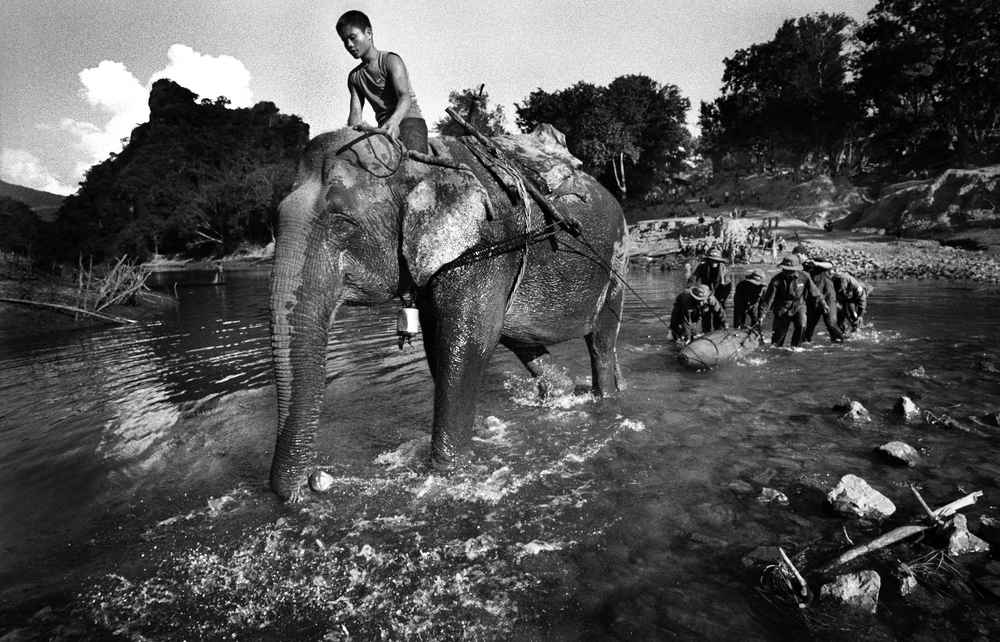
Phanop, Khammouane Province, Laos, November 2004
When a 2000lb bomb was discovered in a local village, MAG enlisted the help of an elephant named Bounmar to ensure the community was safe.
Once the team confirmed the bomb was safe to move, Bounmar led the way to a secure location where MAG teams could carry out a controlled explosion.
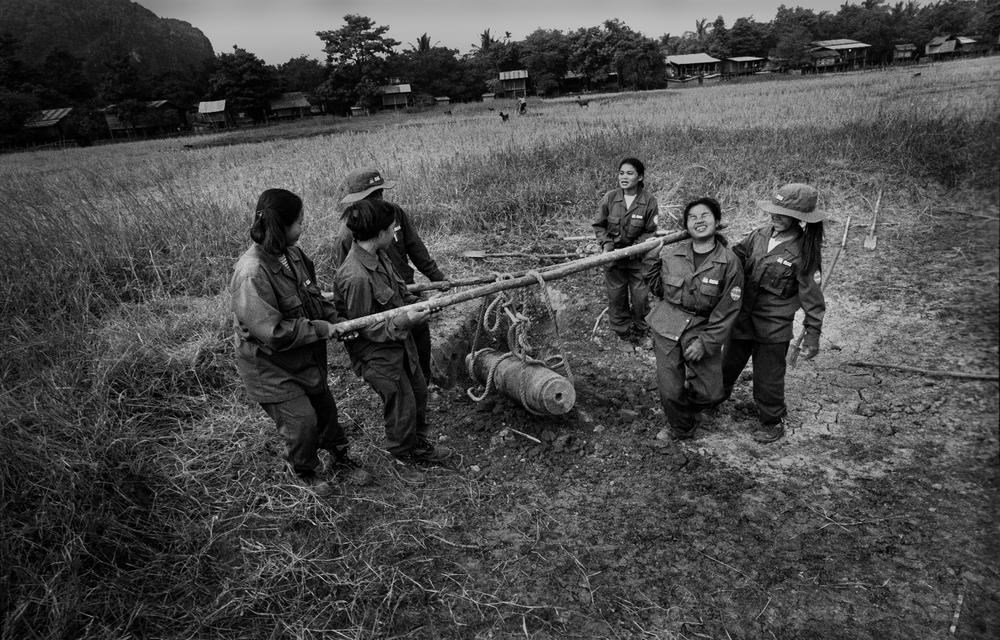
Phanop, Khammouane Province, Laos, November 2004
A 500lb bomb is lifted out of the earth by a MAG team that came to clear the area of unexploded ordnance.
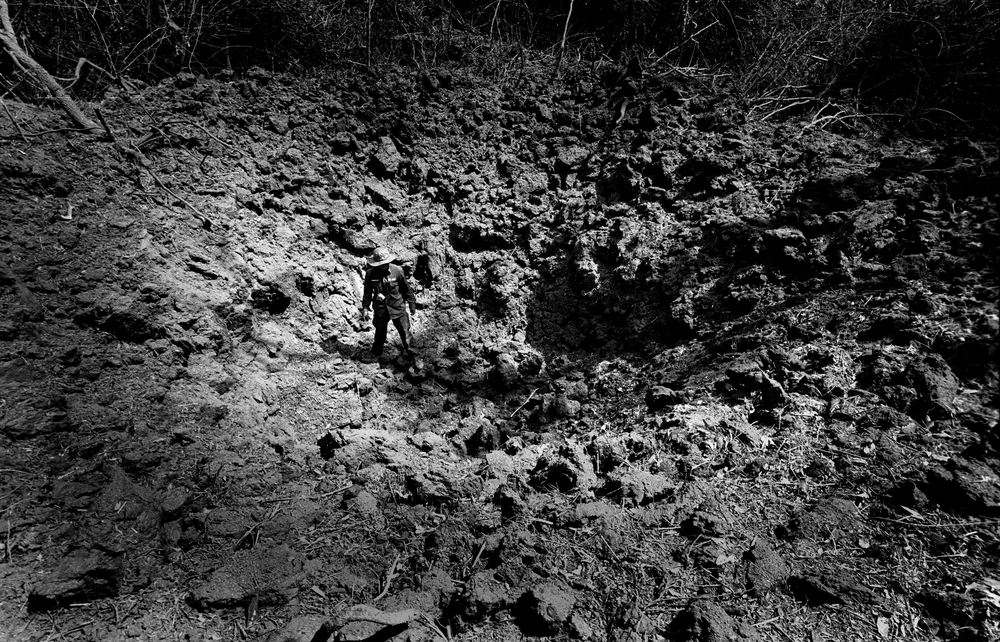
Phanop, Khammouane Province, Laos, November 2004
The crater where a 100lb Bullpup 12C guided bomb was destroyed by a MAG team in a controlled explosion.

Xieng Khouang Province, Laos, November 2006
Bomb craters created during the Vietnam War scar the Laotian landscape. Millions of bombs were dropped on Laos during the war. Decades later, and Laos is still living with the deadly legacy of war.
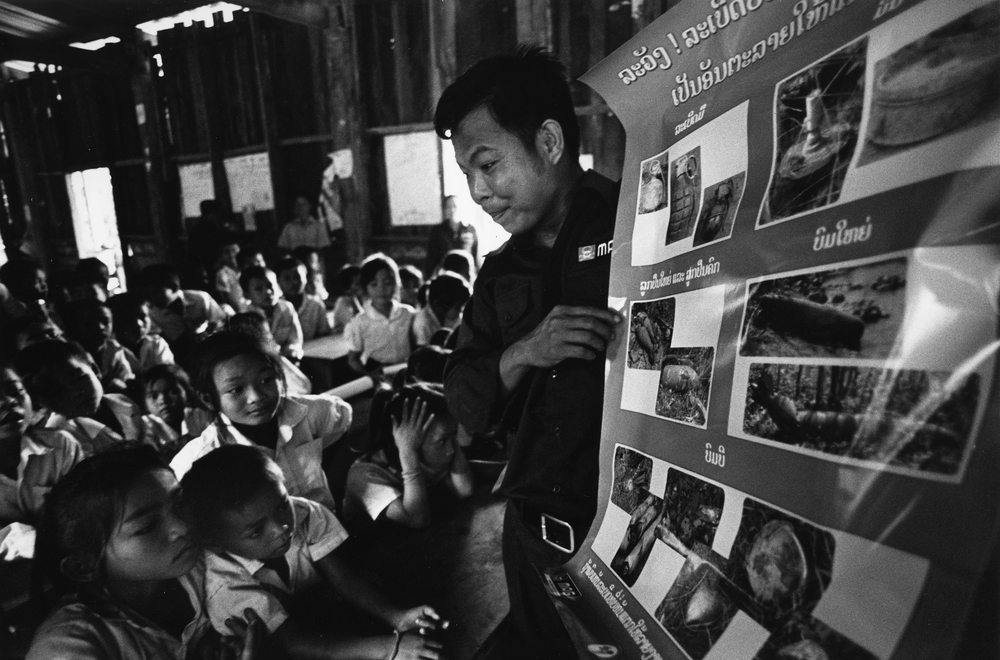
Ban Phanop, Khammouane Province, Laos, October 2009
MAG Community Liaison Officer engages school children with an unexploded ordnance awareness lesson in Phanop School.
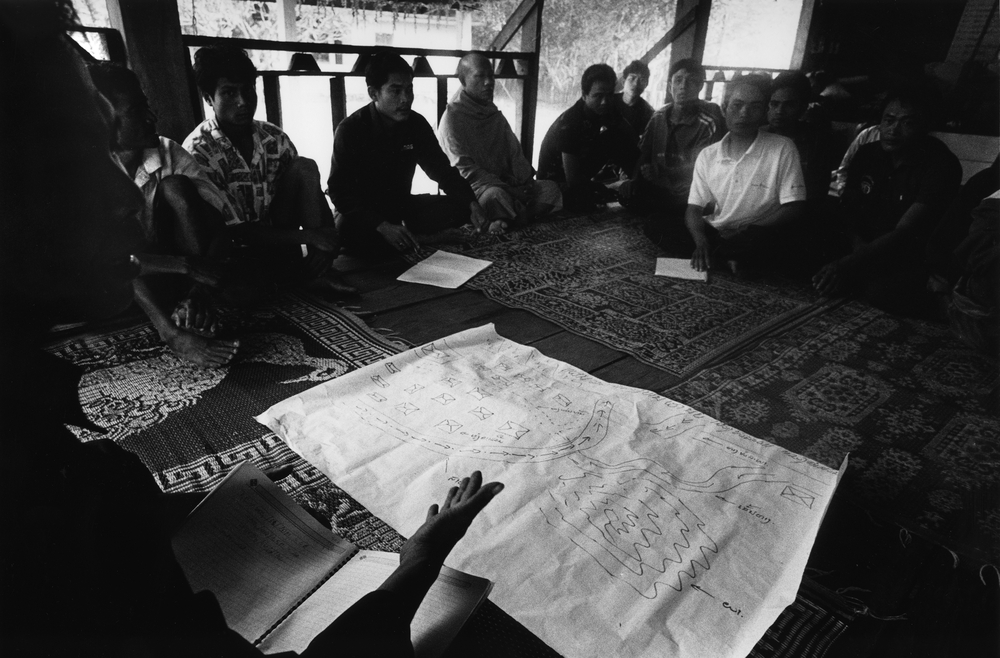
Ban Phanop, Khammouane Province, Laos, October 2009
A MAG Community Liaison team discusses future priorities for MAG clearance using a map of unexploded ordnance compiled during a village meeting.

Khammouane Province, Laos, October 2009
Children playing at the Pon Toum School. A MAG team cleared 5,200 square metres of land in the village, during which they unearthed 10 BLU 26 bomblets from the school's playground.

Ban Nachat, Laos, 2012
Staff clear an area using deep–search detectors to be used for agriculture by the community. There is a desperate need for safe land in many parts of Laos.

Xieng Khouang Province, Laos, 2012
A MAG Community Liaison team working in Ban Nator, a small village with 26 families, works with villagers to create maps showing accident sites and areas most in need of clearance.
MAG teams have been here a number of times before, clearing items on the surface and items found by the villagers. Headman Banachak Bourphet expressed his hopes for the future: "Agriculture is how we make a living. We grow chilies, salad and just enough rice to eat. If MAG clears more land for us it will improve the quality of life for the people. It will stop us from living in fear and the children will be safer. The population is increasing. When people get married they need land. Many have found UXO trying to build houses and there have been three accidents."
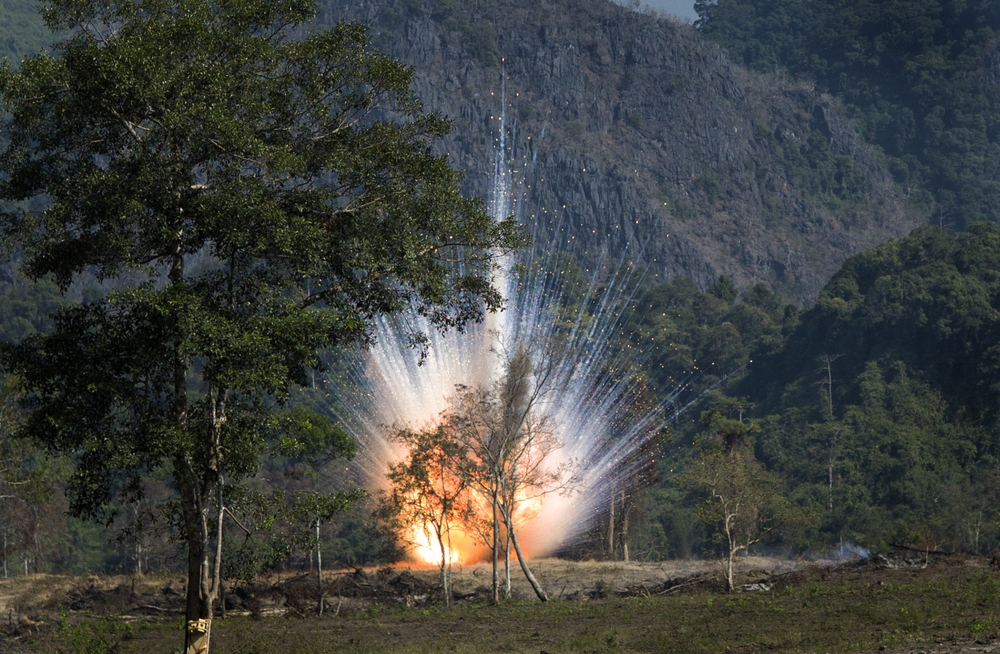
Khammouane Province, Laos, 2012
A white phosphorus bomb is safely destroyed after being carefully lowered into a prepared half-barrel and covered in sand and water to keep it stable and out of contact with the air.
Usually bombs and projectiles are placed in deeper holes to minimize the chances of fragmentation during the demolition. In this case, the bomb has to be blasted up into the air to make sure all of the white phosphorus is burned off as it makes contact with oxygen. It was important to find a large wide-open area away from vegetation.
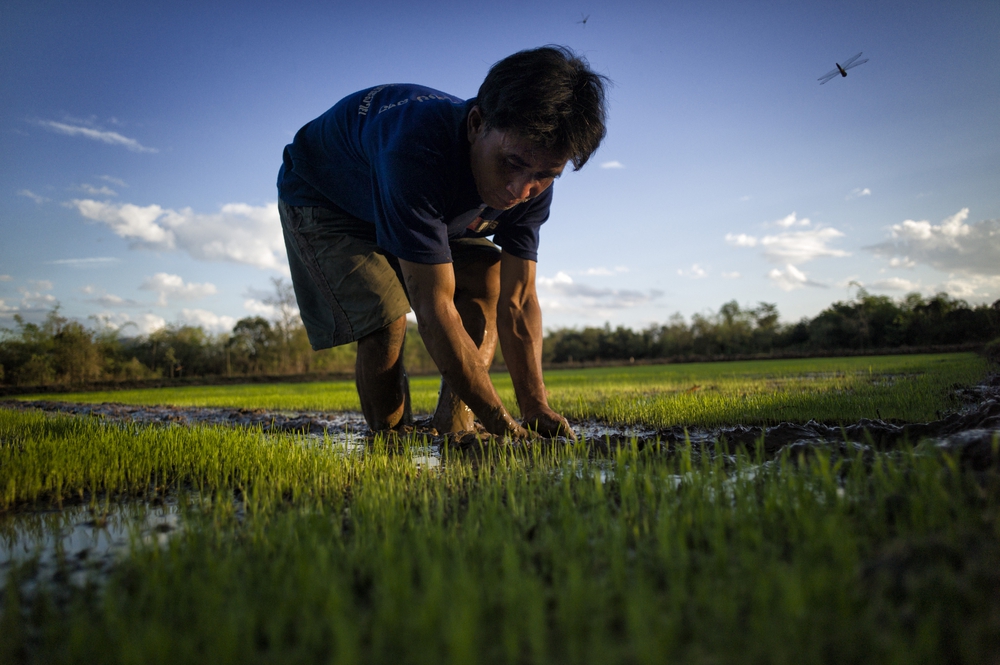
Khammouane Province, Laos, 2012
Donang Siven tends to his crop of seedling rice in Khammouane Province in central Laos, which was a target for bombing. The airstrikes were mostly aimed at disrupting movement along the Ho Chi Minh Trail – a key logistical supply route used by the North Vietnamese.
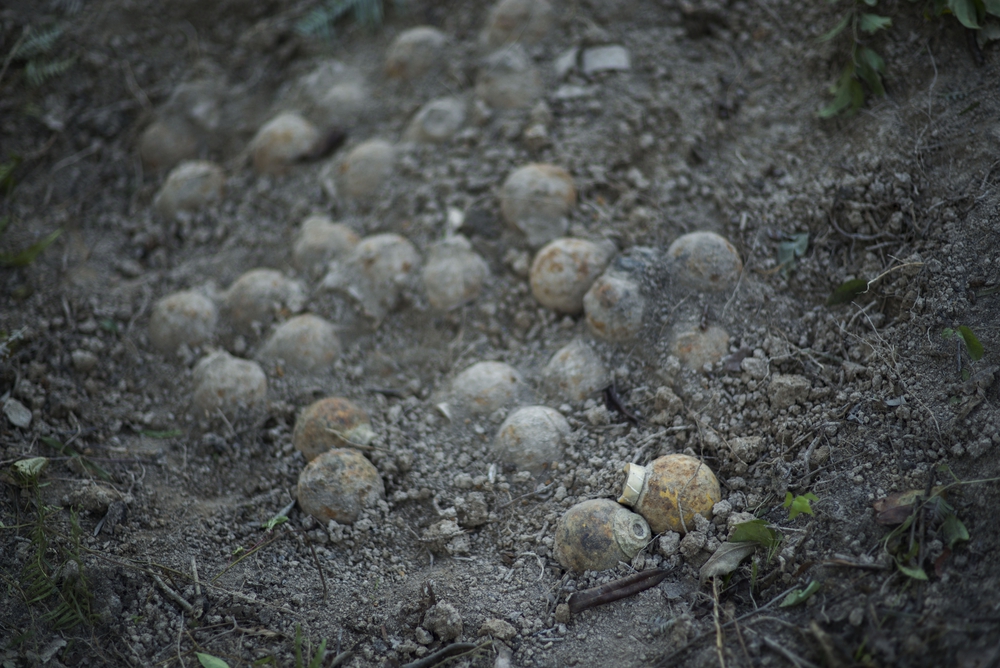
Boua Noua, Xieng Khoang Province, Laos, 2014
Several BLU 43 cluster bomb submunitions discovered in Boua Noua. Millions of these bombs remain buried in Laos, each one capable of killing or injuring those who come across them.
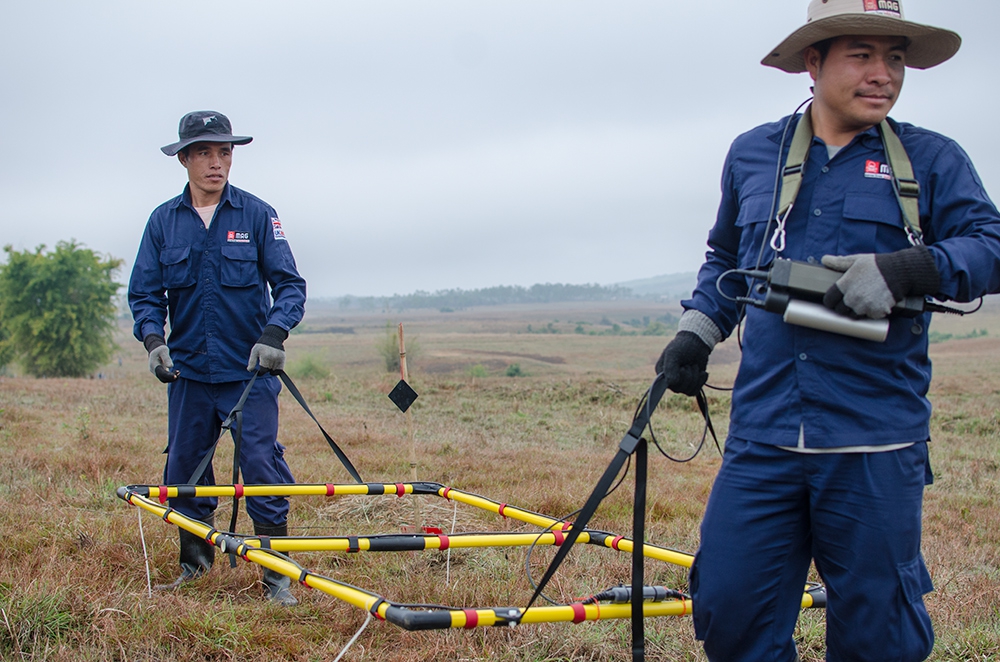
Xiangkhouang Province, Laos, 2016
MAG deminers use a loop detector to search large areas of land more efficiently and effectively.
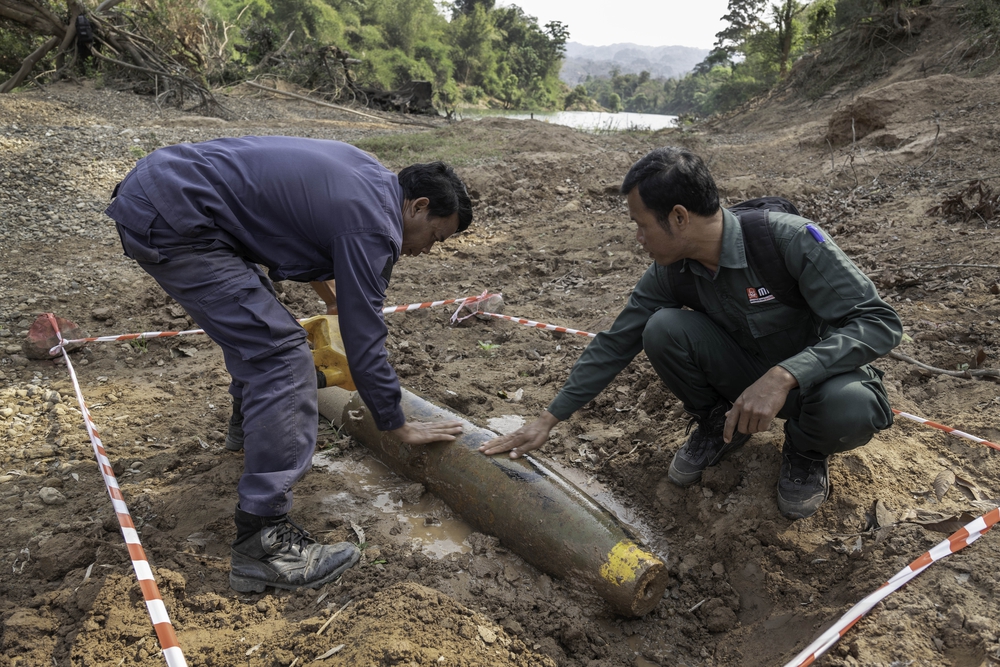
Boulapha, Khammouane Province, Laos, 2020
This 500lb Mk82 aircraft bomb was dropped around 50 years ago and was uncovered during the rainy season on a riverbank 800 meters from a village.
This was the second big bomb MAG teams found in Boulapha that week.
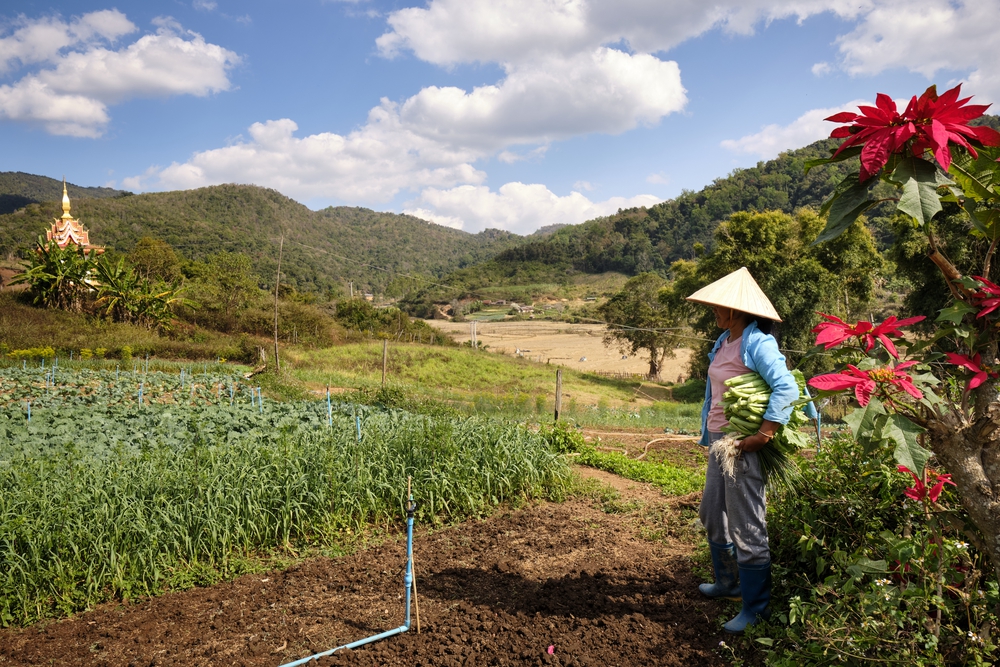
Tham village, Khoun district, Xieng Khouang Province, Laos, 2021
For years, the people of Tham lived in constant fear of unexploded bombs in their fields. The village chief recalls finding 25 bombs in a single day. In 2015, MAG cleared Tham village, safely removing 335 explosive items.
Now, thanks to years of community effort, over 100,000m2 is now used for farming, providing a safe space for more than 20 households to grow vegetables, feed their families, and generate income.
Mrs Tan, one of the residents using the new community garden in Tham village, said: “My garden is around 400 square meters. I plant cabbage and garlic every year. I invest around 2,000,000 kip per year (approx. US$200) in the garden and earn 7,000,000 kip from my garden (US$700). I have used this income to build a new house."
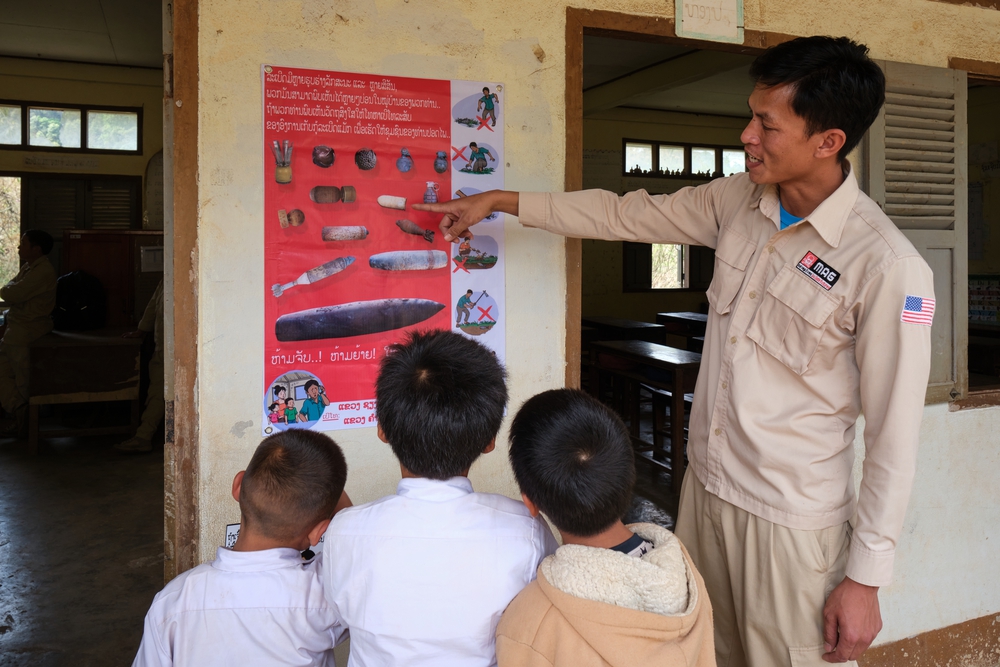
Khammouane Province, Laos, 2023
For many children in Laos, explosive ordnance risk education is part of their daily education. MAG's Community Liaison teams regularly deliver risk education sessions in schools, sharing life-saving information on how to stay safe around unexploded bombs.

Khammouane Province, Laos, 2023
Today, hundreds of communities across Xieng Khouang and Khammouane provinces have turned cleared areas into thriving, productive land.
However, there is still much work to be done in Laos, and MAG is unwavering in its commitment to ensuring a safer future for all.
Learn more about about MAG's work here.





